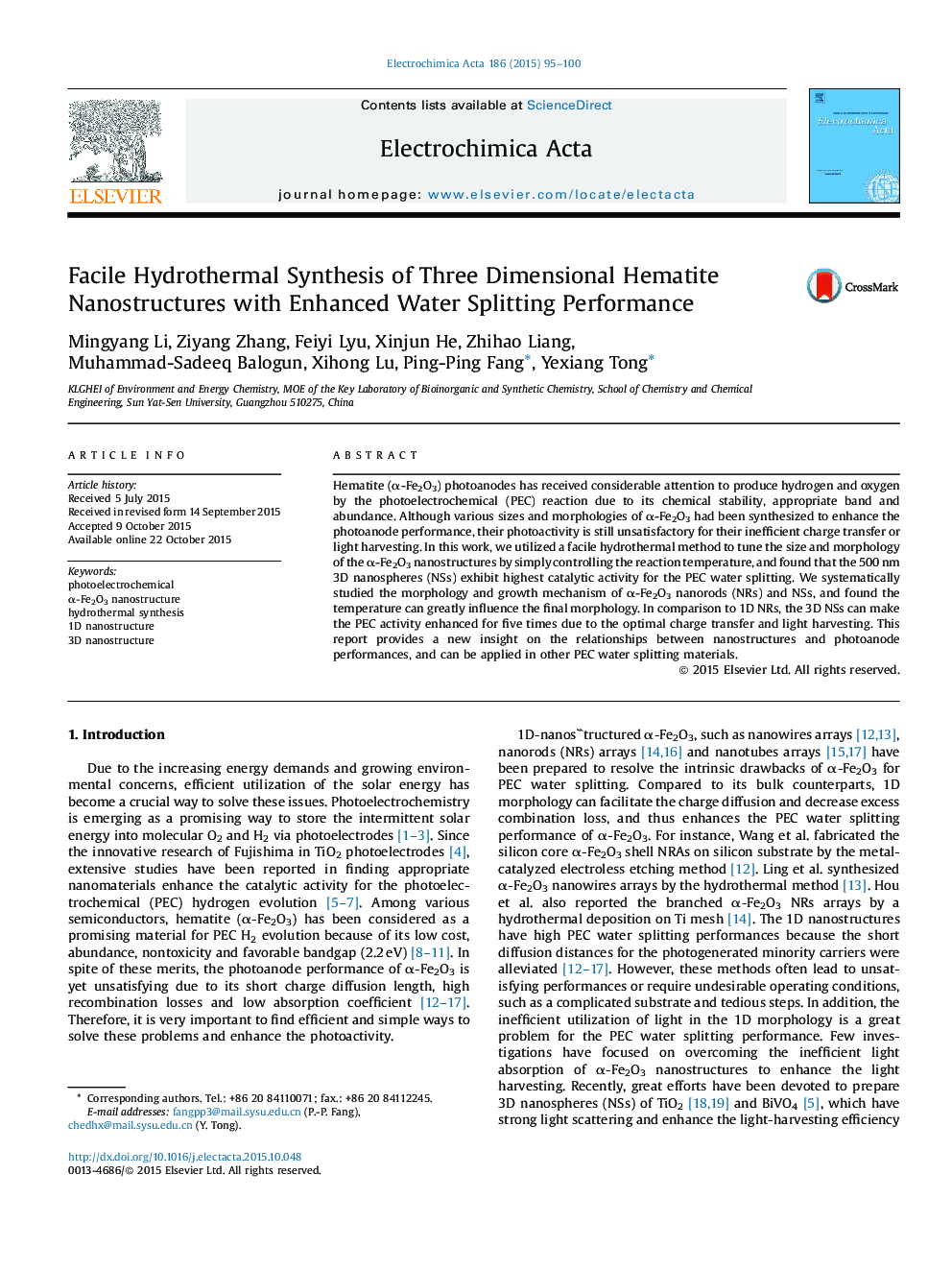| Article ID | Journal | Published Year | Pages | File Type |
|---|---|---|---|---|
| 183545 | Electrochimica Acta | 2015 | 6 Pages |
•The controllable size and morphology of the α-Fe2O3 nanostructure can be obtained by tuning the hydrothermal temperature.•The different α-Fe2O3 nanostructures exhibit distinct differences in the charge transportations and the light absorptions.•The 500 nm α-Fe2O3 nanospheres exhibit the highest PEC performance among the various α-Fe2O3 nanostructures.
Hematite (α-Fe2O3) photoanodes has received considerable attention to produce hydrogen and oxygen by the photoelectrochemical (PEC) reaction due to its chemical stability, appropriate band and abundance. Although various sizes and morphologies of α-Fe2O3 had been synthesized to enhance the photoanode performance, their photoactivity is still unsatisfactory for their inefficient charge transfer or light harvesting. In this work, we utilized a facile hydrothermal method to tune the size and morphology of the α-Fe2O3 nanostructures by simply controlling the reaction temperature, and found that the 500 nm 3D nanospheres (NSs) exhibit highest catalytic activity for the PEC water splitting. We systematically studied the morphology and growth mechanism of α-Fe2O3 nanorods (NRs) and NSs, and found the temperature can greatly influence the final morphology. In comparison to 1D NRs, the 3D NSs can make the PEC activity enhanced for five times due to the optimal charge transfer and light harvesting. This report provides a new insight on the relationships between nanostructures and photoanode performances, and can be applied in other PEC water splitting materials.
Graphical abstractFigure optionsDownload full-size imageDownload as PowerPoint slide
